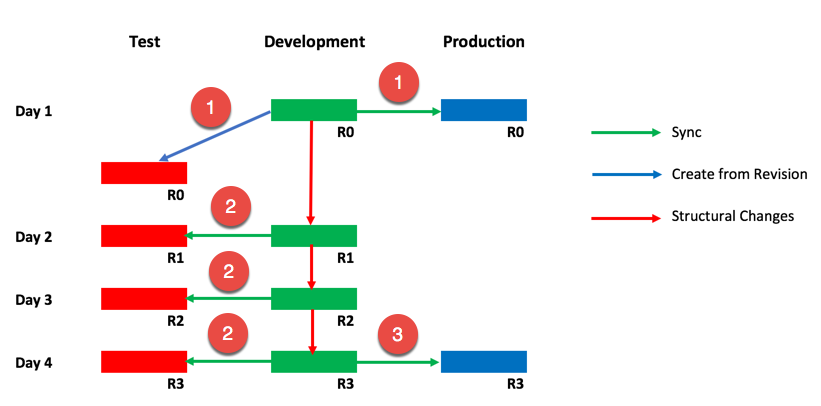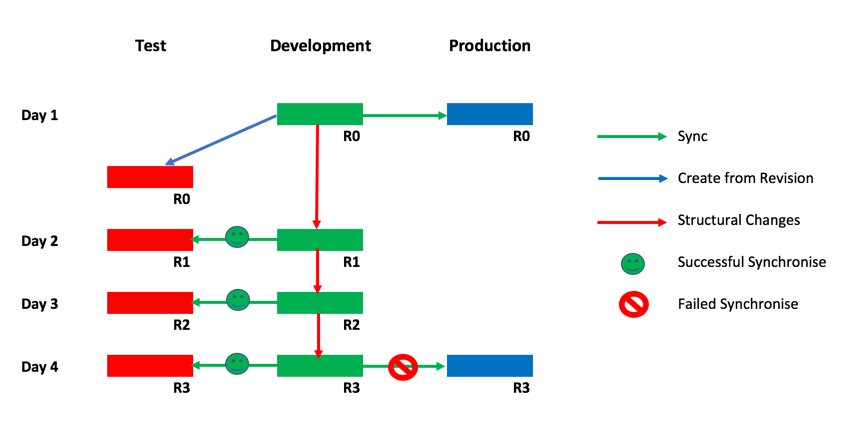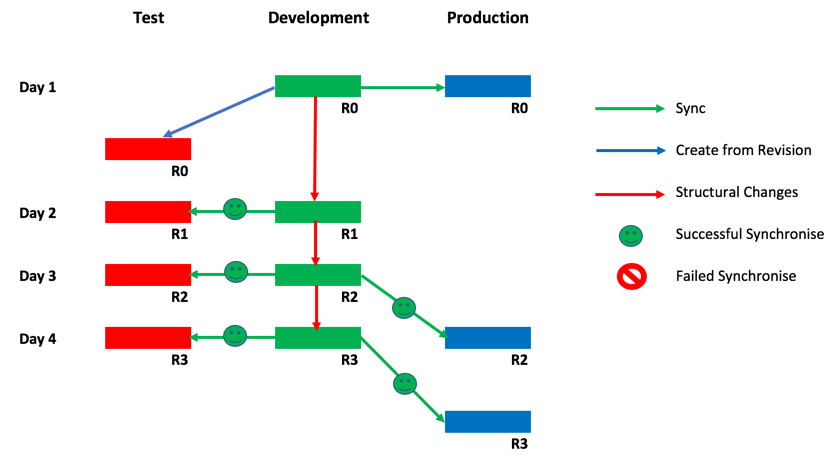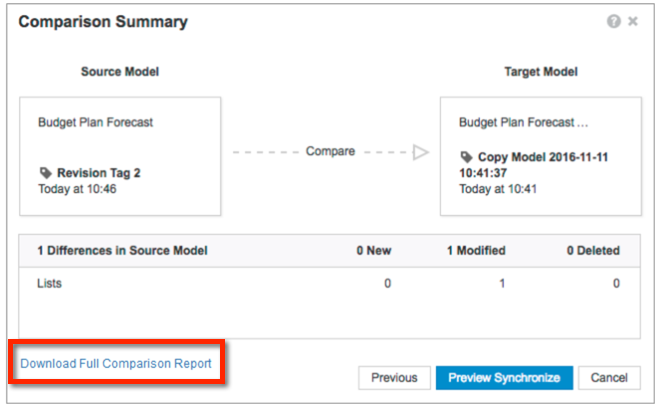Would you spend weeks on your budget submission spreadsheet or your college thesis without once saving it?
Probably not.
The same should apply to making developments and setting revision tags. Anaplan recommends that during the development cycle, you set revision tags at least once per day. We also advise testing the revision tags against a dummy model if possible.
Little and often
The recommended procedure is as follows:
- After a successful sync to your production model, create a dummy model using the ‘Create from Revision’ feature. This will create a small test model with no production list items.
- At the end of each day (as a minimum), set a revision tag and attempt to synchronize the test model to this revision tag. The whole process should only take a couple of minutes.
- Repeat step 2 until you are ready to promote the changes to your production model.

Why do we recommend this?
There are a very small number of cases where combinations of structural changes cause a synchronization error (99 percent of synchronizations are successful). The Anaplan team is actively working to provide a resolution within the product, but in most cases, splitting changes between revision tags allows the synchronization to complete. In order to understand the issue when a synchronization fails, our support team needs to analyze the structural changes between the revisions.
Setting revision tags frequently provides the following benefits:
- The number of changes between revisions is reduced, resulting in easier and faster issue diagnosis.
- It provides an early warning of any problems so that someone can investigate them before they become critical.
- The last successful revision tag allows you to promote some, if not most, of the changes if appropriate.
- In some cases, a synchronization may fail initially, but when applying the changes in sequence the synchronization completes. Using the example from above:

Synchronizations to the test model for R1, R2, and R3 were all successful, but R3 fails when trying to synchronize to production.
Since the test model successfully synchronized from R2 and then R3, you can repeat this process for the production model.

The new comparison report provides clear visibility of the changes between revision tags.

Author David Smith.
Contributing author Bob Bachynsky.